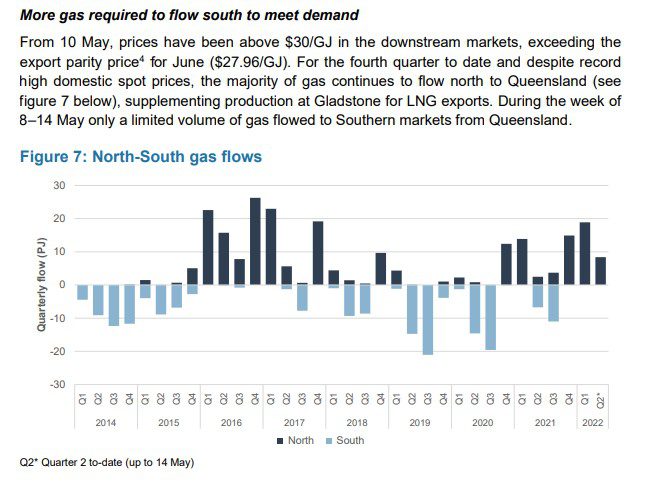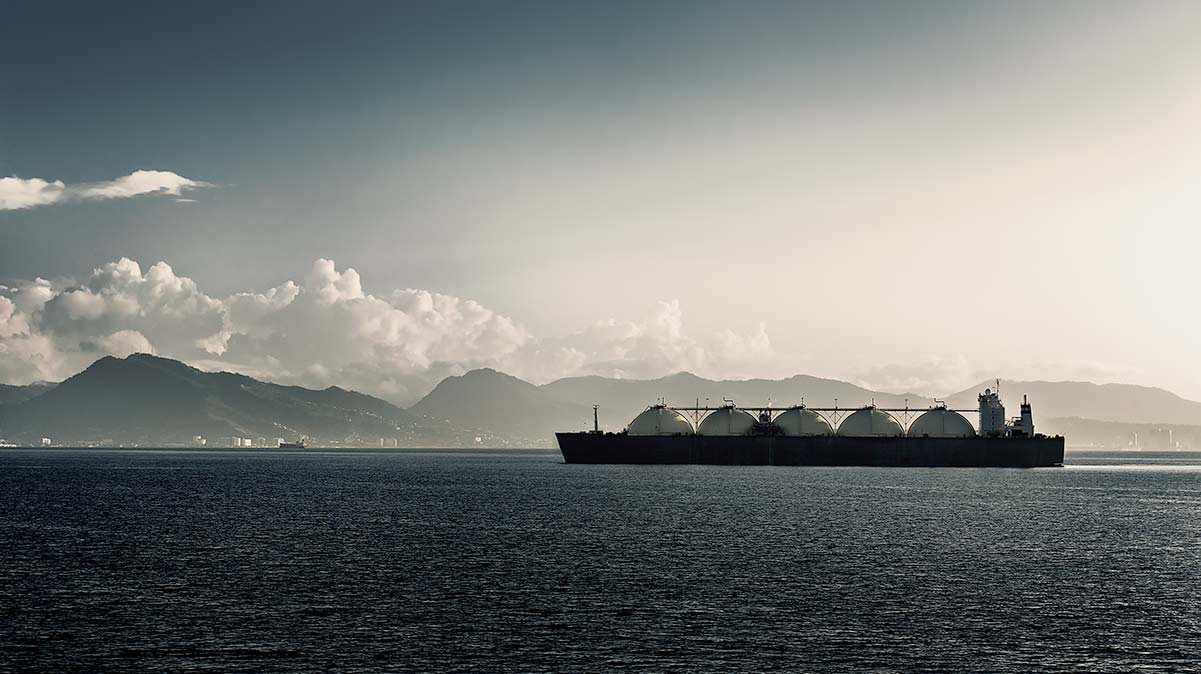New gas market data shows that in the midst of an emerging energy market crisis, gas was being diverted away from Australian domestic gas users and to Queensland’s LNG exporters – contributing to a surge in gas and electricity prices.
The data, published by the Australian Energy Regulator shows that since the start of the year gas has overwhelmingly flowed out southern states and to Queensland’s gas export terminals – exacerbating an ongoing crisis of tight supply and high gas costs in the domestic market.
“For the fourth quarter to date and despite record high domestic spot prices, the majority of gas continues to flow north to Queensland, supplementing production at Gladstone for LNG exports. During the week of 8–14 May only a limited volume of gas flowed to Southern markets from Queensland,” the AER’s report says.

Think tank The Australia Institute says the data contradicts claims of an actual shortage of gas in Australia’s east-coast market, and Australian consumers were being slugged with higher energy costs because gas producers were prioritising international buyers over the domestic market.
Principal advisor at The Australia Institute, Mark Ogge, said the data highlighted the role Australia’s gas exporters have played in contributing to the perceived ‘supply crisis’ in the domestic gas market, by taking gas out of the domestic market.
“Yet again this data shows we don’t have a gas supply problem, we have a gas export problem,” Ogge said. “Gas production in Australia has tripled over the last decade or so, but 80% of gas produced in Australia goes to export.”
“Gas companies were even charging Australian customers more than export prices.”
“As the gas lobby seeks to spin skyrocketing prices for Australians as a reason to fast-track pipeline approvals and fracking, this evidence shows there is no shortage of gas just an excess of greed for export super profits.”
New AER report shows in midst of the energy crisis (May 8-14) more gas flowing North for export than South to supply domestic market.
LNG exporters plundering domestic gas to feed exports with domestic prices exceeding netback price after from May 10. #auspol pic.twitter.com/KzZqrs8TWW
— Mark Ogge (@MarkOgge) June 28, 2022
The gas industry, as well as the former Morrison government, has advocated for an expansion of Australia’s gas production arguing that it could alleviate high gas prices and supply challenges in the domestic market.
But data produced by regulators, including the Australian Energy Regulator and the ACCC, consistently shows Australia producing significantly more gas than is used domestically, with price and supply pressures being the result of gas exporters seeking to increase the amount of gas sent offshore.
In March, oil and gas giant Santos was forced to concede that its plans to develop new gas reserves in the Northern Territory’s Beetaloo Basin were predominantly focused on supplying gas to export markets, rather than to domestic energy users.
These gas companies use more gas running their export terminals than Australia’s entire manufacturing industry,” Ogge added.
“It’s not that we don’t have enough gas, it’s that the companies want to ship it overseas to the highest bidder.”
A recent update published by the ACCC as part of its ongoing inquiry into Australian gas markets predicts that Australian LNG producers will withdraw more gas from the domestic market than they are expected to supply throughout the year – as exporters seek to meet long-term supply contracts.
“The LNG producers expect to take more gas out of the domestic market than they expect to supply in 2022, which we first reported on in July 2021. While the LNG producers forecast to supply 160 PJ into the domestic market, they expect to withdraw 27 PJ more from the domestic market with 187 PJ of third party purchases,” the ACCC reported in February.
“There has been a downward trend in the quantities supplied by the LNG producers into the domestic market.”
Due to the significant volume of Australian gas being sold into international markets – which have been thrown into crisis due to the flow-on impacts of the Russian invasion of Ukraine – Australian domestic gas prices have surged to unprecedented highs.
High gas prices have also contributed to a surge in wholesale electricity prices – with gas generators often being the ‘price-setters’ within the National electricity market.










